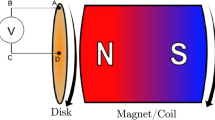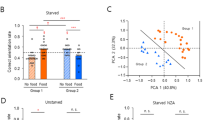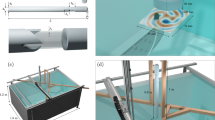Abstract
SOME time ago we carried out experiments1 to determine whether the rotation of the plane of polarised light still takes place when the frequency of the magnetic field is very high, for example, ten times that of the Larmor precession frequency. Polarised light from an arc lamp (or preferably a sodium arc) is polarised by a nicol prism, then passes through a tube containing sodium vapour at low pressure (about 7.5 × 104 mm.) and finally is analysed by a second nicol. The tube containing the sodium vapour is placed inside a coil forming part of a resonance circuit tuned to a high frequency valve oscillator. The plane of polarisation of the light was rotated on passing through the sodium vapour in the presence of the oscillatory magnetic field. The intensity of brightness after the second nicol was compared for high frequencies (n) with that for 50 c.p.s. No diminution in this ratio was found when the frequency n was about nine times the Larmor frequency OL corresponding to the magnetic field amplitude .
This is a preview of subscription content, access via your institution
Access options
Subscribe to this journal
Receive 51 print issues and online access
$199.00 per year
only $3.90 per issue
Buy this article
- Purchase on Springer Link
- Instant access to full article PDF
Prices may be subject to local taxes which are calculated during checkout
Similar content being viewed by others
References
Bretscher and Deck, Helv. Phys. Acta, 6, 229; 1933.
Author information
Authors and Affiliations
Rights and permissions
About this article
Cite this article
BRETSCHER, E. Magnetorotation with Alternating Fields of High Frequency. Nature 132, 856–857 (1933). https://doi.org/10.1038/132856a0
Issue Date:
DOI: https://doi.org/10.1038/132856a0
Comments
By submitting a comment you agree to abide by our Terms and Community Guidelines. If you find something abusive or that does not comply with our terms or guidelines please flag it as inappropriate.



